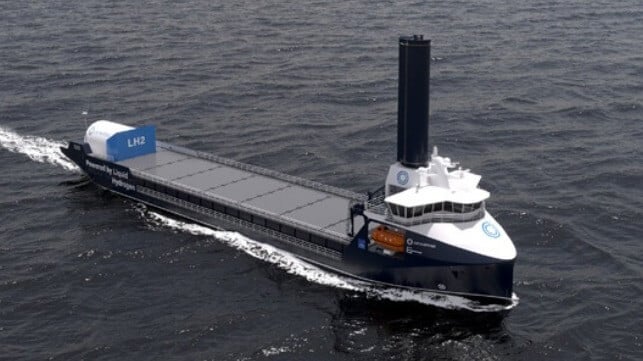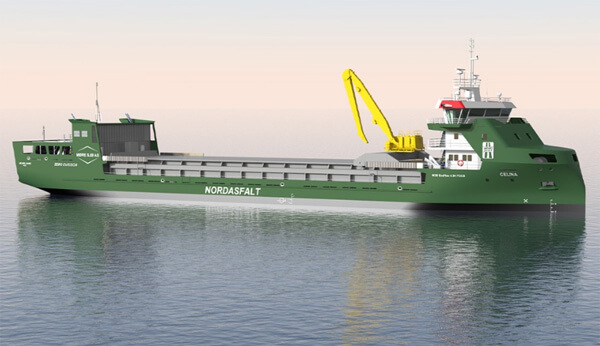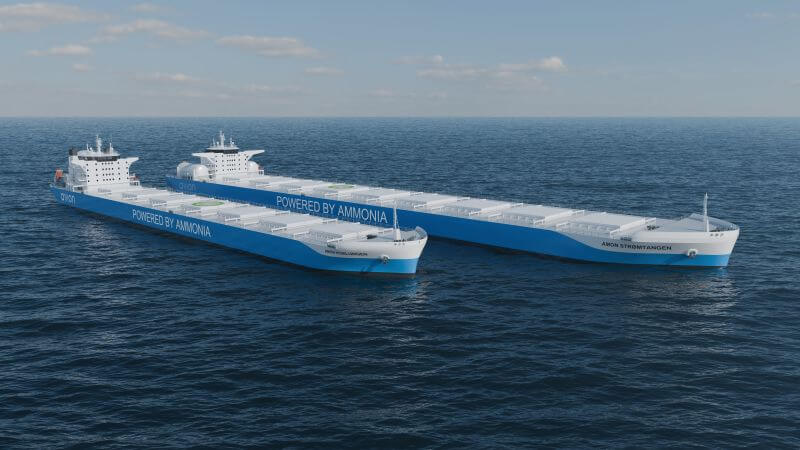Norway Provides $76M in Grants to Advance Hydrogen and Ammonia Ships

Norway continues to support the advancement of a broad range of new technologies that it points out will both contribute to maritime decarbonization while also creating new industries and jobs for Norway. The Enova program announced its fourth round of grants, providing a total of approximately $76 million for projects advancing hydrogen and ammonia as fuels for ships, as well as the establishment of facilities for storing ammonia.
Enova SF is owned by Norway’s Ministry of Climate and Environment, and is focused on technology and market development, digitalization, supporting communities, and business management. Shipping has been one of its key focuses as an industry that is vital to Norway and provides strong opportunities for the future.
“Norway must be at the forefront of the transition at sea,” said Minister for Climate and Environment Andreas Bjelland Eriksen. “When we support the development of such projects in the maritime sector, we enable them to take the lead in implementing new solutions globally.”
In this award round, Enova reports it selected four hydrogen-powered and two ammonia-powered ships to receive support. A total of approximately NOK 510 million ($50 million) is being allocated to hydrogen projects and NOK 253 million ($25 million) to ammonia projects.
The projects include LH2 Shipping and Møre Maritime, each of which is working on developing two hydrogen-powered vessels. Amon Maritime announced in June that it was launching a bulk shipping operation, and it is receiving grants for two ammonia ships from Enova.

Møre Maritime is receiving grants for its project for two hydrogen powered short sea bulkers (Enova)
Operations using liquid hydrogen have already been demonstrated over the last two years with Norled’s M/F Hydra pilot project, a ferry operating in Norway. LH2 Shipping reports that its personnel worked as project managers for the Norled project, and its goal is to use this experience to begin to scale up hydrogen operations. Its first project focuses on short sea shipping as it looks to increase the range and move hydrogen into open sea operations. LH2 is receiving $23.5 million from Enova to advance its concepts for liquid-hydrogen ships.
LH2 notes that it is critical to also focus on the infrastructure required to support hydrogen. It says that as hydrogen facilities are developed along the coast, it will enable shipowners to move forward with investment decisions for liquid hydrogen-powered vessels. At the same time, LH2 is also scaling up and expanding into new ship segments where fuel cells and batteries work together in hybrid systems for vessels.

Amon Maritime reports it is seeking construction bids for two large ammonia-fueled bulkers (Amon Maritime)
Amon Maritime is more advanced as it works with ammonia, which is approaching commercial operations. It has developed plans for two bulk carriers, one approximately 180,000 dwt (Capresize) and the other at 85,000 dwt (Kamsarmax). It reports that it has entered a shipyard evaluation and tendering process for these vessels and aims to order the vessels for delivery by 2029. Amon is receiving $25 million from Enova.
Amon Maritime’s CTO Steinar Kostøl highlights that medium sized gas carriers (MGC) are large vessels with a high fuel consumption. As such, they are a strong target for adopting ammonia-fueled propulsion. Because the ship is already designed for transporting ammonia, Amon notes that the relative additional cost of ammonia-fueled propulsion compared to conventional ships will be less than most other segments. It believes its design concept can help to support the development of the category and drive investment in ammonia storage and bunkering.
Enova reports that it supports a wide range of measures and technologies within energy and climate, and works technology-neutrally to contribute where the need is greatest and the support has the most effect, also within shipping. In addition to the focus on hydrogen and ammonia, support is provided for battery electrification, biogas production, and the development of technology for other energy carriers in maritime transport.
